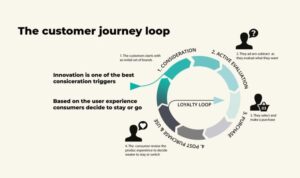Multi-Channel Marketing is the key to unlocking success in today’s digital age, where brands juggle various platforms to connect with customers. Get ready for a wild ride through the world of marketing strategies and customer engagement!
From defining multi-channel marketing to exploring its benefits and challenges, this topic will keep you on the edge of your seat with insights and tips to navigate the multi-channel landscape like a pro.
Definition of Multi-Channel Marketing

Multi-channel marketing is a strategic approach where businesses use multiple channels to interact with their target audience. This includes a combination of online and offline channels such as social media, email, websites, physical stores, and more. The key aspect of multi-channel marketing is providing a seamless experience for customers across all channels.
Differences from Omni-Channel Marketing
While multi-channel marketing focuses on using various channels to reach customers, omni-channel marketing takes it a step further by integrating these channels to create a unified and consistent experience. Omni-channel marketing aims to provide a seamless journey for customers regardless of the channel they use, ensuring a cohesive brand experience.
Examples of Multi-Channel Marketing Strategies
- 1. Starbucks: Starbucks utilizes a multi-channel approach by allowing customers to order coffee through their mobile app, website, drive-thru, and physical stores. This flexibility caters to different customer preferences.
- 2. Nike: Nike combines its online store, physical retail locations, social media platforms, and partnerships with fitness apps to create a seamless shopping experience for customers.
- 3. Amazon: Amazon is a prime example of multi-channel marketing with its online marketplace, mobile app, physical stores like Amazon Go, and Alexa voice assistant integration.
Importance of Integrating Various Channels
Integrating various channels in a multi-channel marketing strategy is crucial for ensuring a cohesive and effective approach to reaching customers. By providing multiple touchpoints for customers to interact with the brand, businesses can increase visibility, engagement, and ultimately drive conversions. Consistency across all channels helps build brand loyalty and trust among consumers, leading to long-term relationships and repeat business.
Benefits of Multi-Channel Marketing

Multi-channel marketing offers a plethora of advantages for businesses looking to expand their reach and engage with customers in various ways. By utilizing multiple channels, companies can enhance their brand visibility, customer engagement, sales, and loyalty.
Improved Brand Visibility
- Expanding presence across different platforms increases the chances of reaching a wider audience.
- Consistent brand messaging across channels reinforces brand recognition and awareness.
- Being present where customers are active enhances the visibility of the brand in their daily lives.
Enhanced Customer Engagement
- Interacting with customers through various channels allows for personalized communication tailored to their preferences.
- Engaging with customers on multiple platforms builds a stronger relationship and fosters loyalty.
- Providing seamless experiences across channels ensures a positive customer journey and satisfaction.
Increased Sales and Customer Loyalty
- Offering consistent brand experiences across channels can lead to higher conversion rates and increased sales.
- Building trust and loyalty through multi-channel interactions encourages repeat purchases and long-term relationships with customers.
- Utilizing data from different channels enables targeted marketing strategies that drive sales and customer retention.
Key Components of a Multi-Channel Marketing Strategy
To create a successful multi-channel marketing strategy, it is essential to consider various key components that work together to reach your target audience effectively.
Identify Your Target Audience, Multi-Channel Marketing
- Determine who your target audience is and where they are most active.
- Segment your audience based on demographics, behavior, and preferences.
- Understand their needs and tailor your messaging to resonate with them.
Utilize Multiple Channels
- Utilize a mix of online and offline channels such as social media, email, websites, mobile apps, and physical stores.
- Ensure consistency in branding and messaging across all channels.
- Choose channels that align with your target audience’s preferences and behavior.
Implement Data Analytics
- Collect and analyze data from each channel to understand customer behavior and preferences.
- Use data to personalize marketing messages and offers for each customer.
- Optimize campaigns based on data insights to improve ROI and customer engagement.
Consistent Messaging
- Ensure that your brand messaging is consistent across all channels to maintain brand integrity.
- Align your messaging with your brand values and mission to build trust with customers.
- Adapt your messaging to fit the context of each channel while maintaining a cohesive brand voice.
Challenges of Implementing Multi-Channel Marketing
Implementing a multi-channel marketing strategy comes with its own set of challenges that businesses need to address in order to maximize success. From channel attribution to data integration, overcoming these obstacles is crucial for effective marketing across multiple channels.
Channel Attribution
- One of the major challenges in multi-channel marketing is attributing the success of a campaign to the right channel.
- Without proper tracking and analytics, it can be difficult to determine which channels are driving the most conversions.
- Using tools like UTM parameters and marketing analytics platforms can help in attributing conversions to the correct channels.
Data Integration
- Integrating data from various channels and sources can be complex and time-consuming.
- Discrepancies in data quality and format can lead to inaccurate insights and decision-making.
- Implementing a centralized data management system and utilizing data integration tools can streamline the process.
Aligning Marketing Efforts
- Ensuring consistent messaging and branding across different channels can be a challenge.
- Each channel may have its own unique requirements and audience expectations.
- Creating a cohesive marketing strategy that aligns messaging while catering to channel-specific needs is essential.





